MiCalc
There is a pressing need for improved data management and analysis to improve indigent defense. The practice of public defense is high-stakes and high-uncertainty, and nationwide most public defenders handle hundreds of cases a year. Massive amounts of data are generated on decisions made and about case outcomes. But no systems record and evaluate this data. Similar industries, like medicine and aviation, have been transformed by systematic data collection and the analysis of failures. Public defense operates much as it did before the digital era, and without the benefit of decades of research into creating robust systems. Defenders all too often operate on hunches and passed-on wisdom about effective strategies for practice. There are competing strategies for negotiating with prosecutors, but no empirical evaluation of these strategies. Defenders cannot do everything for every client and must prioritize and pick the strategy they think will yield the most benefit for time spent. But there is no way to evaluate the decisions.
Indigent defense is a resource-constrained environment, where defenders constantly have to make tough calls. With defenders and data, this set of tools can identify hypotheses about how to most zealously advocate for clients and allocate scarce resources. Immediately useful data is at the fingertips of each attorney for every client.
Every day a new Liman report, Vera report, Marshall Project article, or Pro Publica investigation comes out decrying systemic inequalities and disparate impact in the criminal legal system. These reports are enraging, but they don’t immediately help improve individual outcomes for the people in harm’s way. Moreover, they represent a one-time snapshot of a problem. Too often, by the time the institutional response to a crisis is evaluated, the public has moved on. Michigan’s data systems are so decentralized the state commission needed a grant from the Pew Charitable Trust to get a limited one-time snapshot of county-level data.
I built a comprehensive tool for the Neighborhood Defender Service of Detroit that streamlines discovery management, case tracking, sentencing calculations, and shift scheduling. It also leverages data analytics to display outcome statistics for various charges before different judges.
The system leverages data about systemic inequities and case inputs and outcomes to help indigent clients. It is easy, intuitive, and full of tools and analytics to empower individual and group advocacy and track repeat players in the system.
It has three components:
Key Features of MiCalc
- Sentencing Calculator: Calculates sentences based on complex charges and sentencing factors.
- Machine Learning Schedule Generator: Creates optimized monthly schedules using linear programming. This allows attorneys to have more control over schedules, and gets attorneys to clients extremely quickly.
- Automated Assignment System: Consolidates data from multiple sources to collect all publicaly available case imformation instantly.
- Automated Document Generation: Produces subpoenas, sentencing documents, and more.
- Discovery Management: Facilitates seamless download and upload of discovery materials.
- Client and Case Databases: Integrates comprehensive records for efficient case management.
Below are some screenshots of the application; the full application is not shown here due to confidentiality.

Micalc is the homepage for attorneys, investigators, and support staff to set up their schedules and receive cases. I built a machine learning model to optimize schedules for attorneys, which is how they get their cases now.
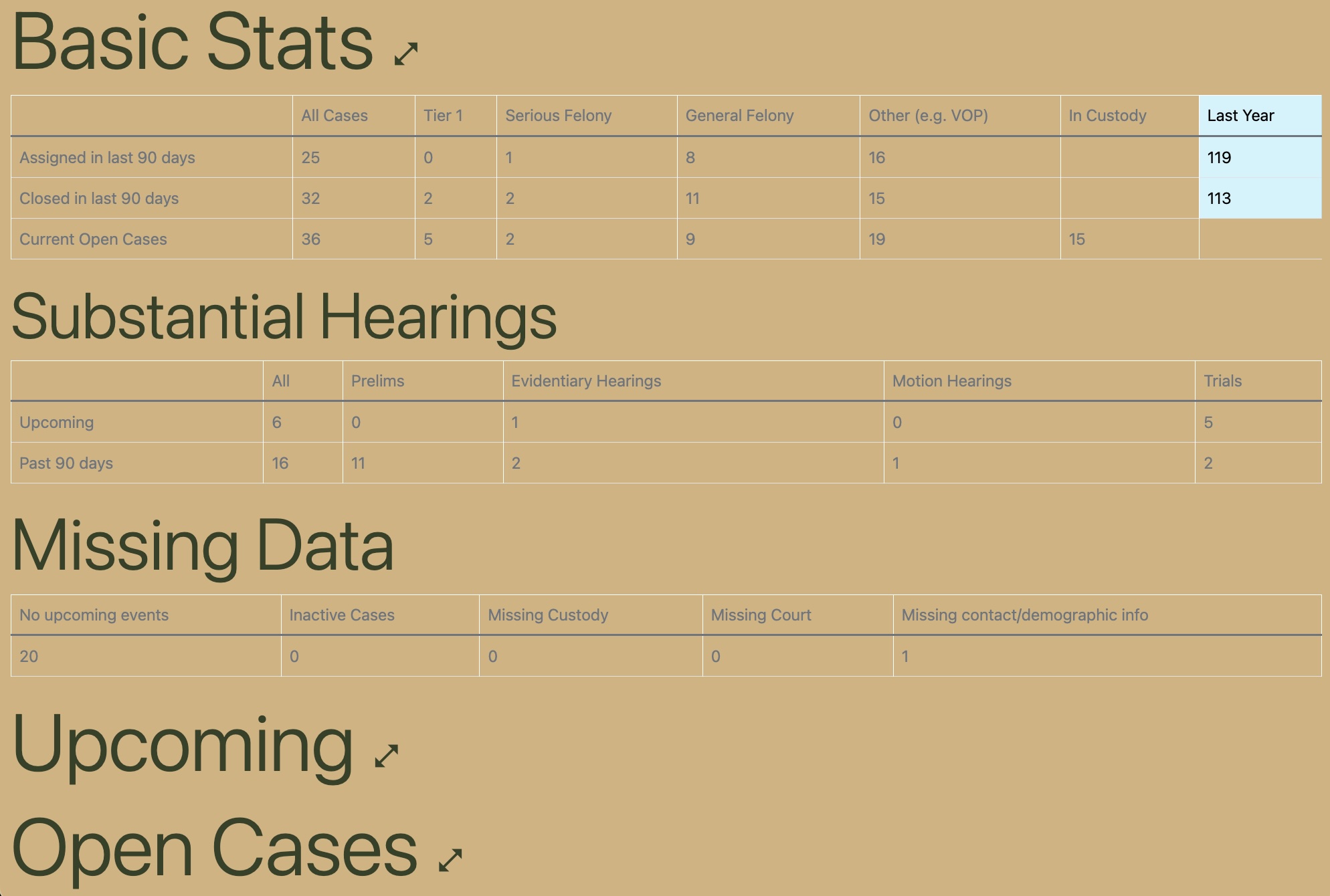
When I started at NDS, there weren’t great tools to stay on top of caseloads, client visits, and so on. I created custom views based on what stakeholders thought would improve representation.
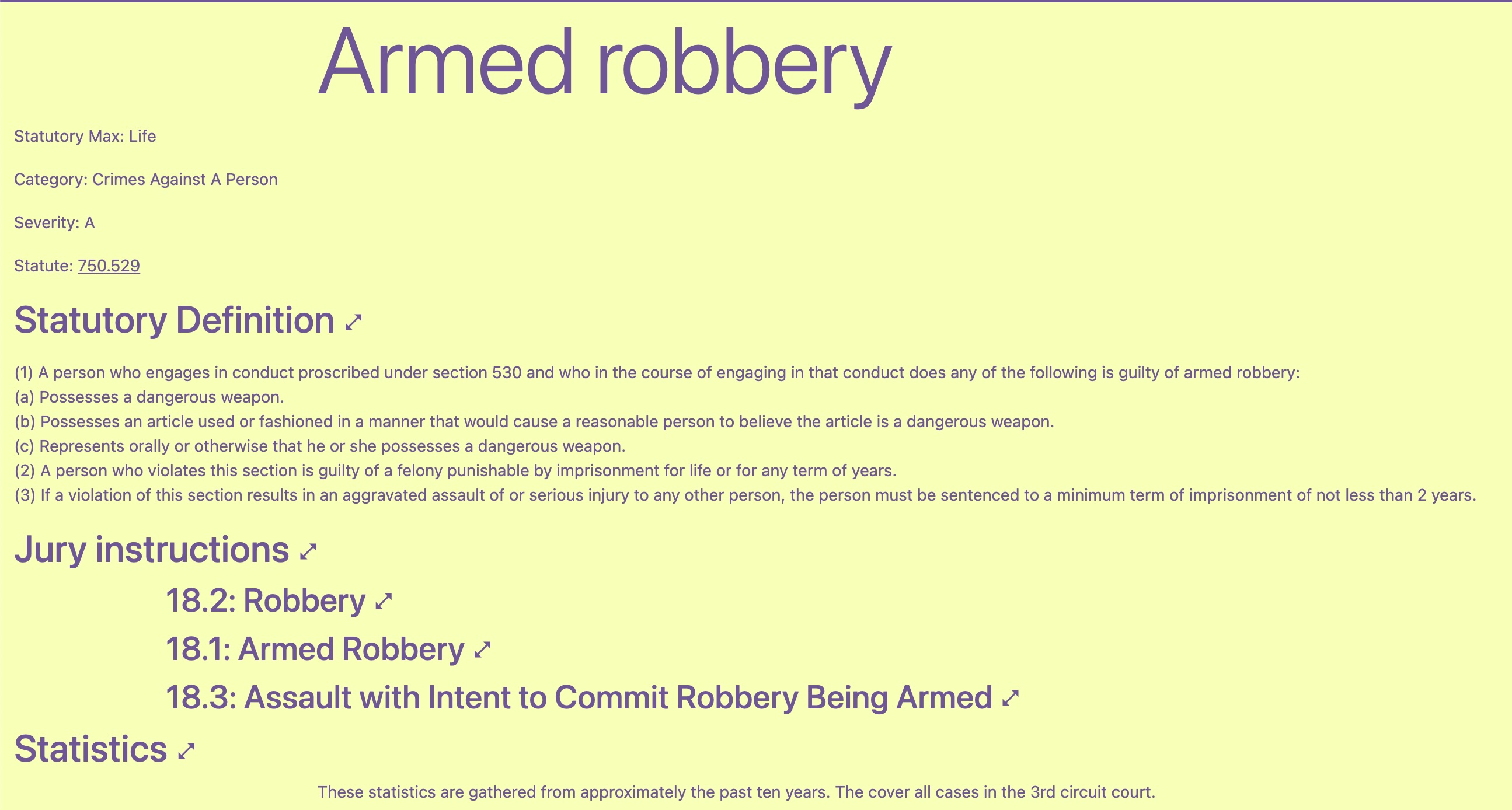
I collected over ten years of data on case outcomes and judge tendencies to help attorneys inform clients about possible outcomes with different pleas in front of different judges. This work was also in support of an effort to identify discrepancies in charging and sentencing.
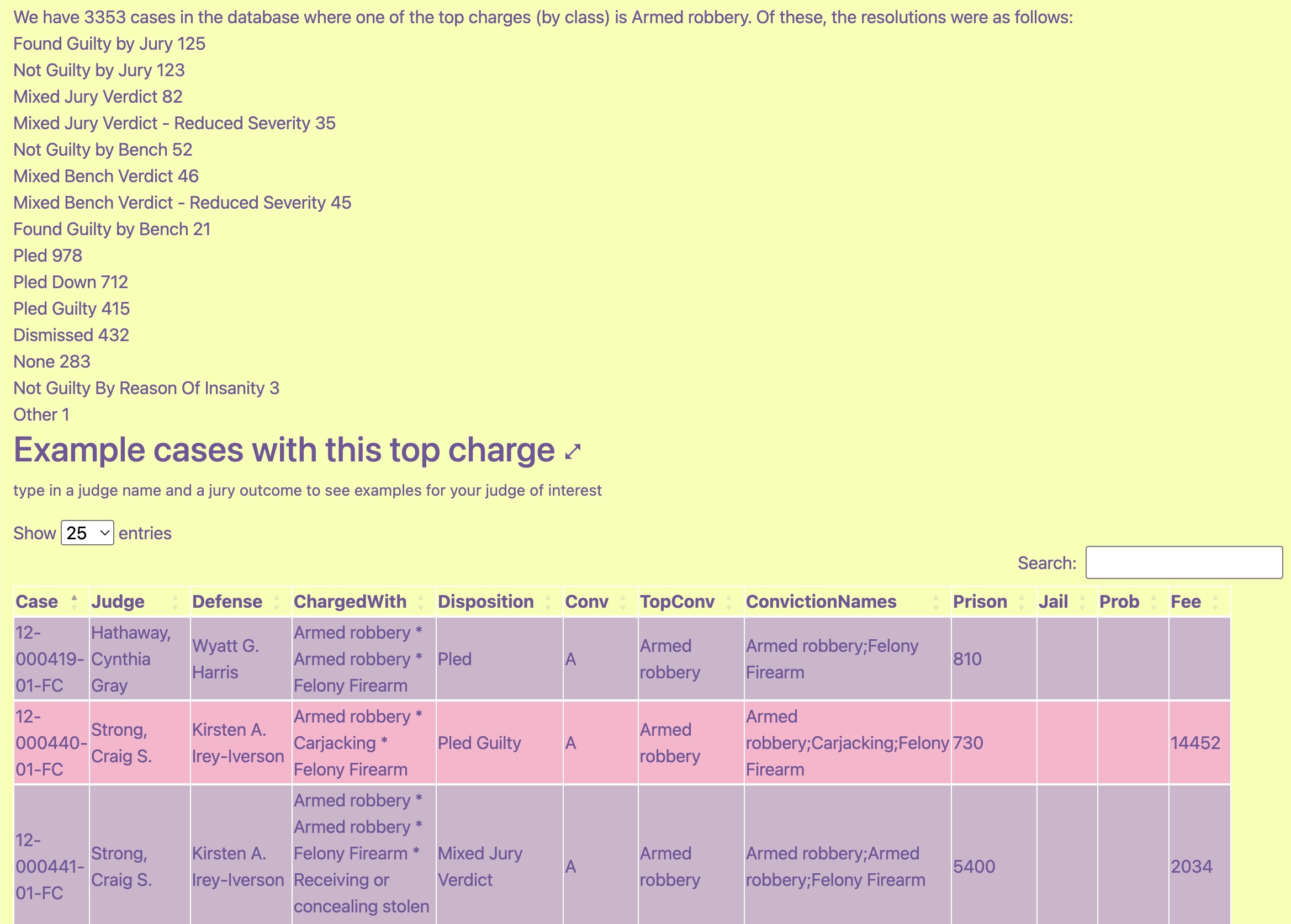
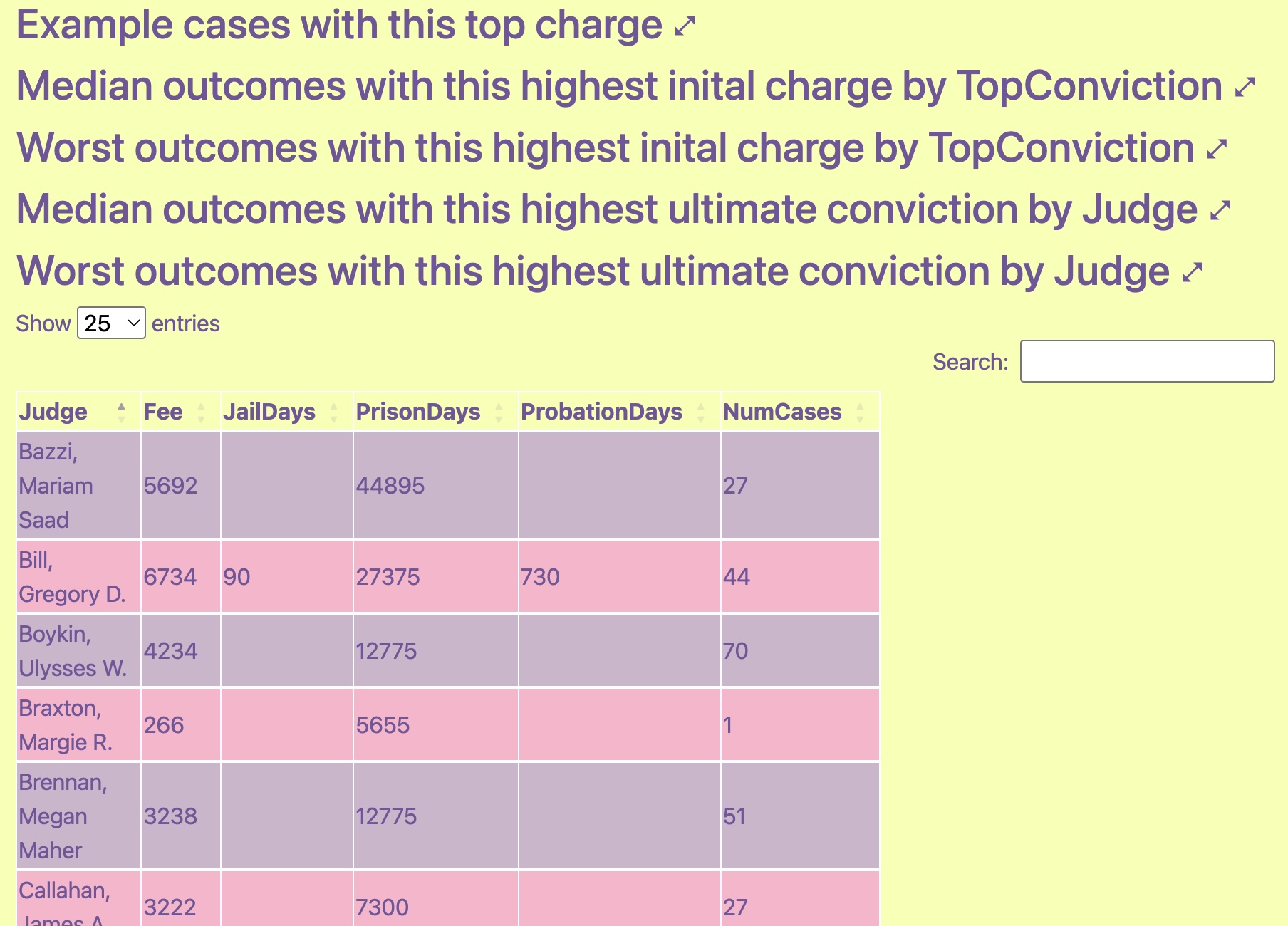
Knowing the tendencies of judges and prosecutors is crucial to effective representation. I built a tool that allows attorneys to see the outcomes of similar cases in front of different judges, and average and worst case scenarios for every charge in the system.
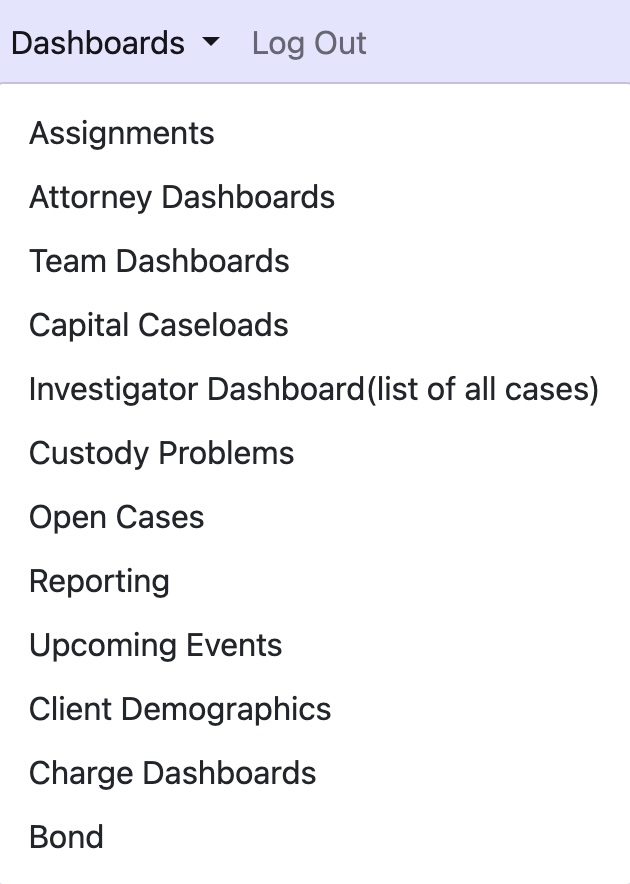
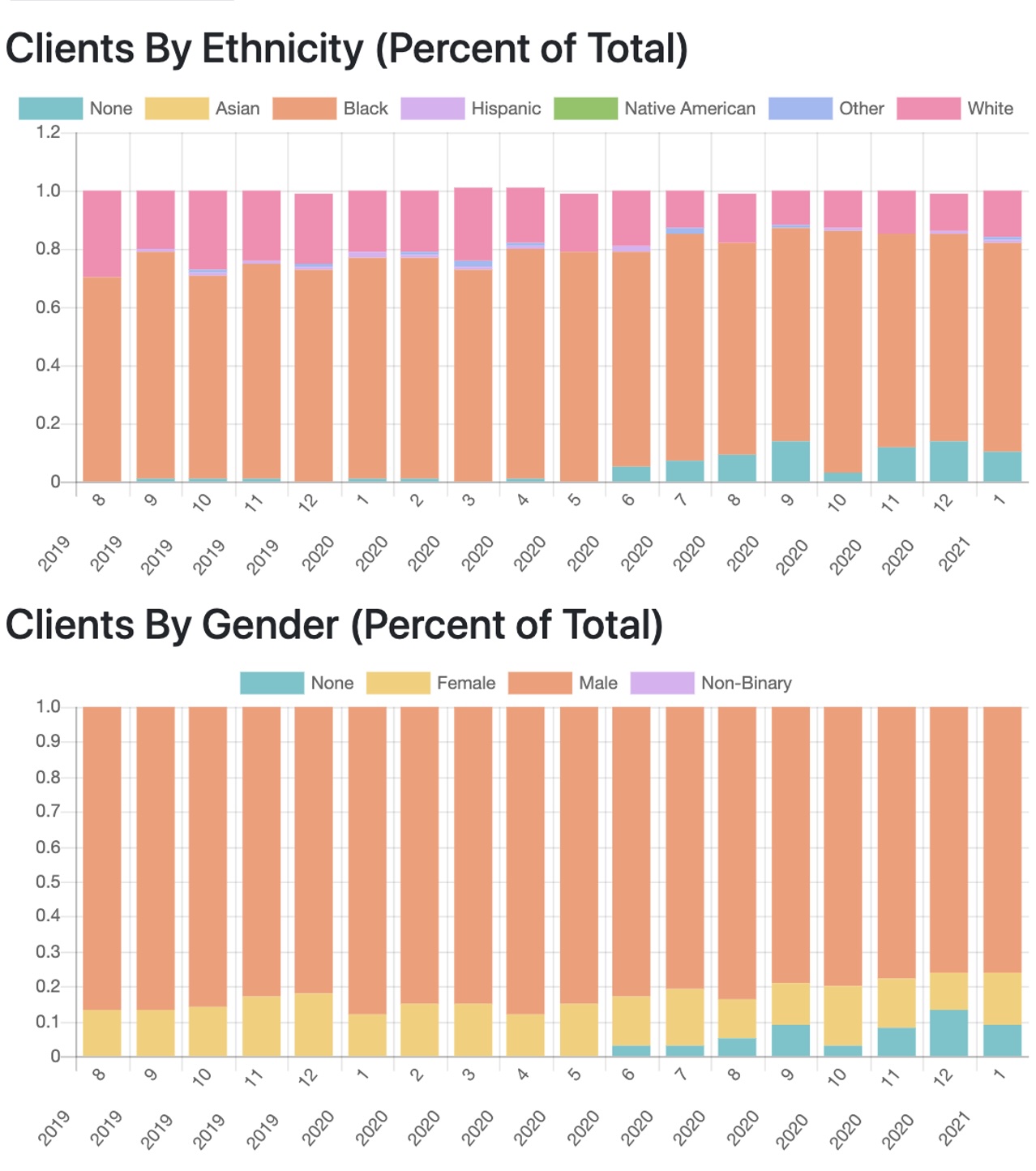
While I can’t share most dashboards here for confidentiality reasons, I built a number of dashboards that show trends across the entire system, for the public defender office and for individual attorneys. This allows NDS to track performance and identify areas for improvement.
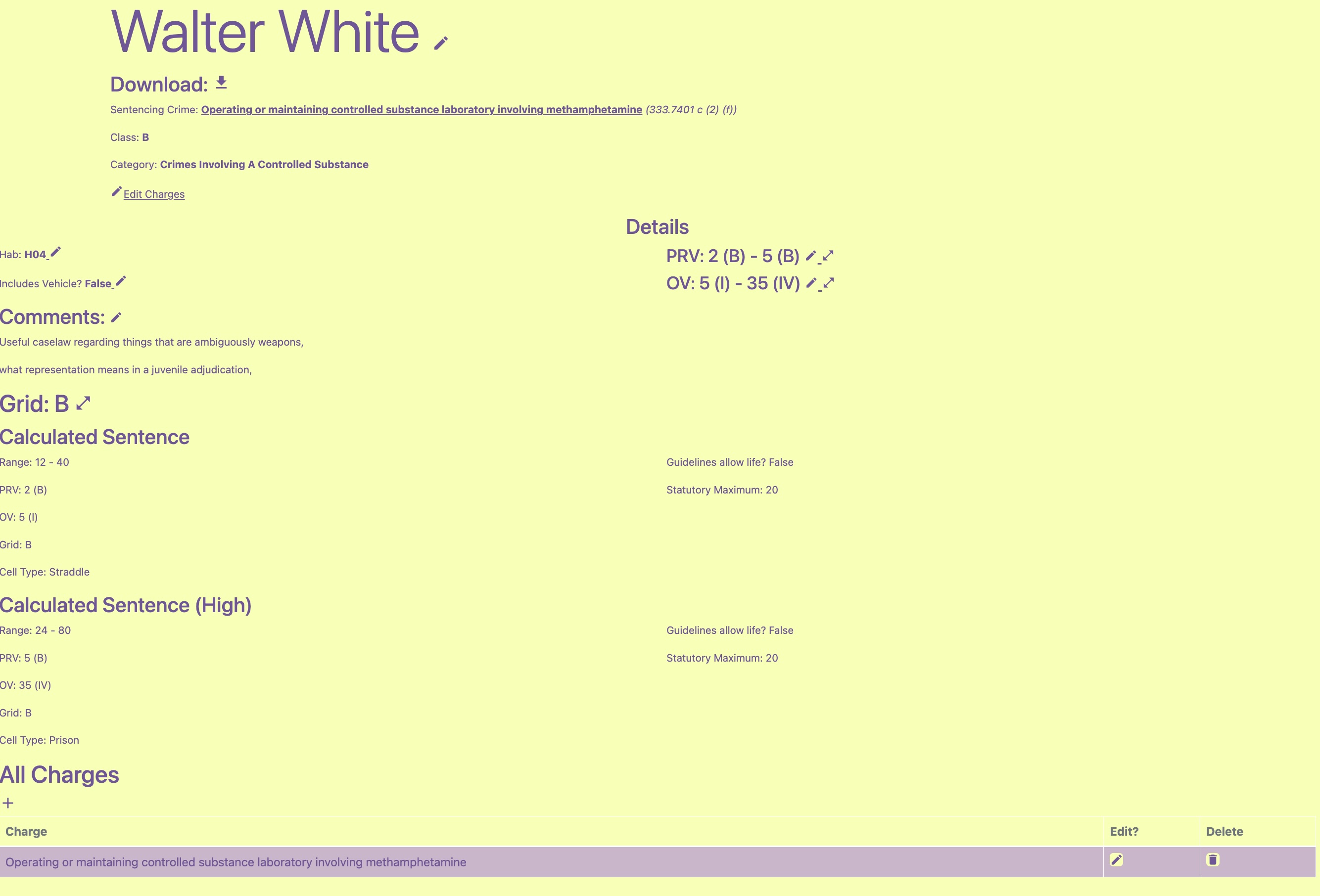
The sentencing standards in Michigan are complex and vary dramatically in what factors must be considered. I created a custom sentencing calculator that allows attorneys to run different scenarios and present their clients with the possible outcomes to inform decisionmaking. The calculator has a printable version so attorneys can bring it clients in jail.
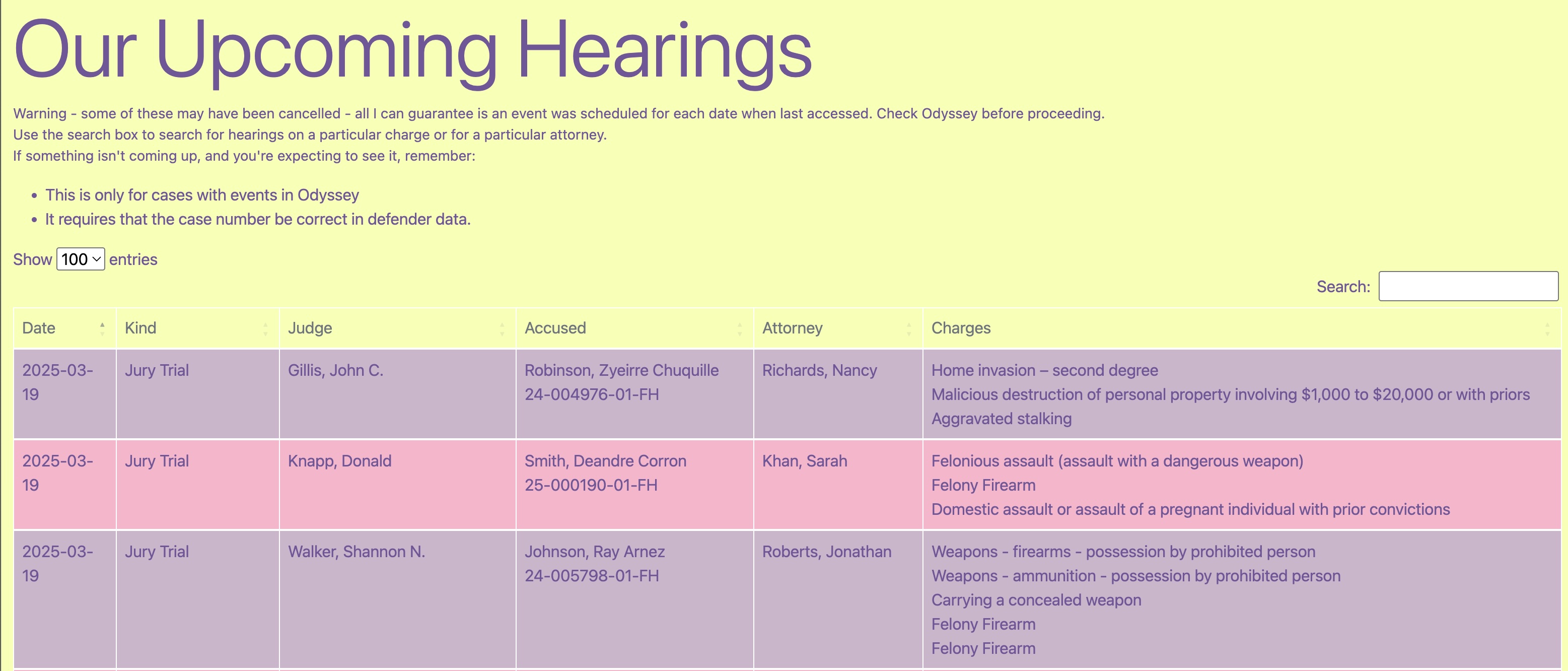
In addition to upcoming hearings for individual cases, there are upcoming hearings for more exciting cases across the district and within the office. This allows attorneys to support one another and to be present for important cases.
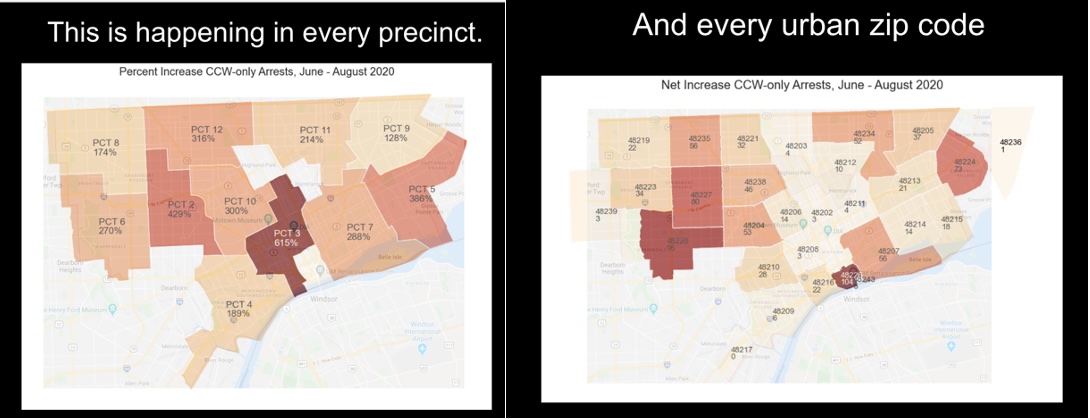
There are told to dive into where specific charges are happening, and hopw those trends are changing over time.
phone: (917)-647-8930
github: github.com/veryeli